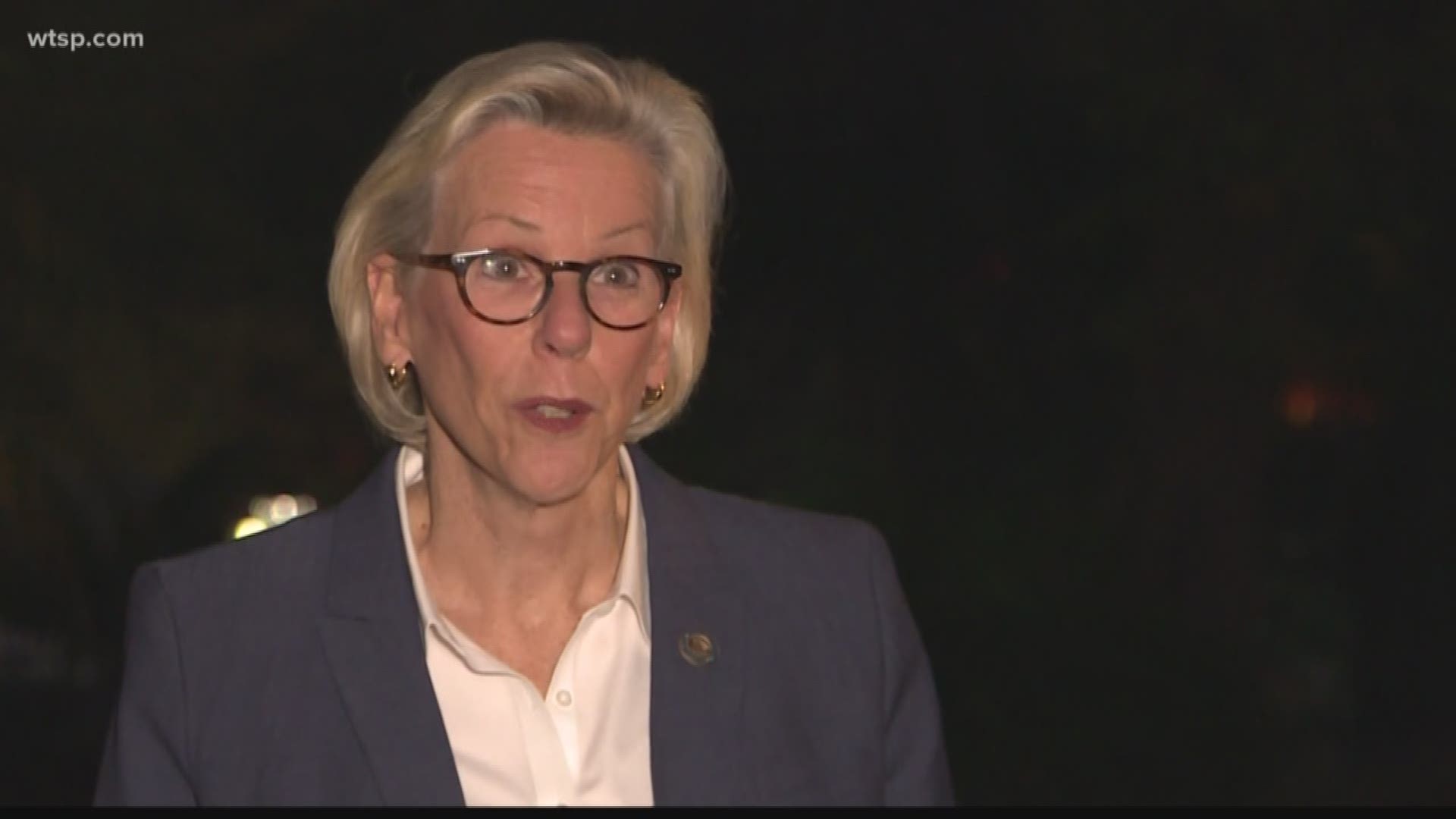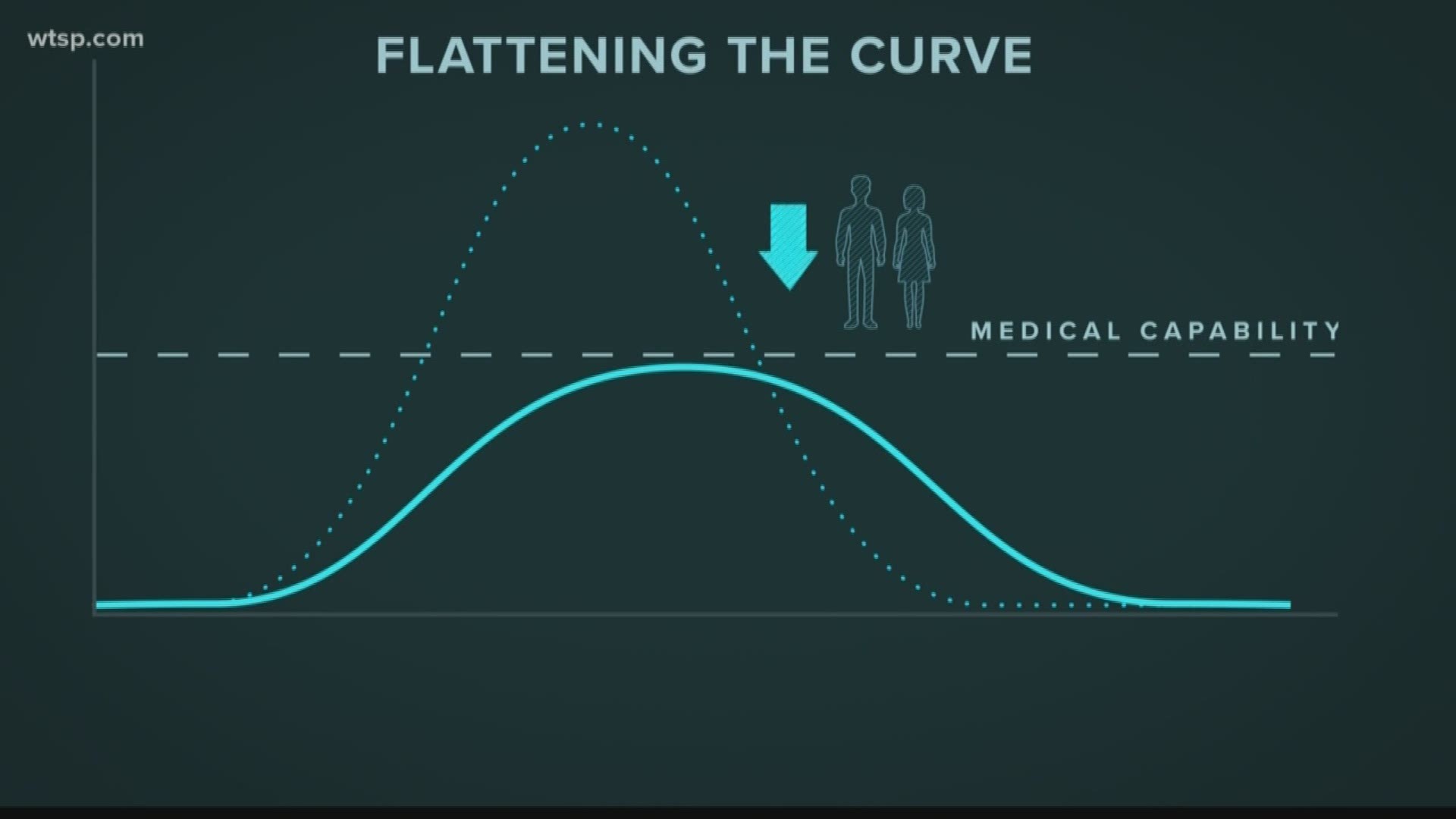ST. PETERSBURG, Fla. — With states like California, Louisiana and Illinois, issuing "stay-at-home" or "shelter in place" orders people across the U.S. are trying to make sense of what their daily life would look like should one be issued where they live.
One could be coming right here in Hillsborough County. Tampa Mayor Jane Castor first sat down with 10News Friday to discuss her interest in both a countywide and statewide order.
Mayor Jane Castor planned to encourage Hillsborough County Commissioners and other Tampa Bay-area leaders Monday to implement a "stay-at-home" order for the county during their Emergency Group Meeting.
“We’d be asking everyone to stay-at-home and trying to do that for 30 days so that we can get over this quickly and we can save lives,” Castor said.
It's an idea Florida’s Agriculture Commissioner Nikki Fried echos on a statewide level.
Ultimately, county leaders opted not to issue a stay-at-home order but instead said they would consider a curfew at their next meeting.
On Friday, Fried asked Governor Ron DeSantis to consider a "stay-at-home" order for all Floridians in response to what she calls ‘dramatically increasing COVID-19 cases’ in the state. As of Monday, DeSantis had not taken that step.
“No governor in recent history would have expected to have to make a decision like California, New York, or Illinois have made in the past 72 hours,” Fried said. “Shutting down one of the nation’s largest states is a decision that will have an economic impact – but it is a decision that will save lives.”
So, what does it all mean?
In simple terms, it means all non-essential trips from your home would not be allowed for a certain period of time. The length is set by your local leaders or governor, depending on who is enacting the order.
It operates under the plan to keep people away from each other to help stop the spread of the virus.
You are still allowed to make trips to the grocery store, go to an essential job or get tested, but trips to your hair salon, local bar or dinner parties are not.
It’s all about social distancing, which is one of the strategies that helps limit the spread of COVID-19.
Once in place, these orders are mandatory for the set amount of time provided by leaders.
What's allowed?
Here is what you can expect to be able to do while under a “stay-at-home” order:
- Go outside for a walk, bike ride or to work out if you are not in a group.
- Care for the elderly, minors, dependents, people with disabilities or other vulnerable persons.
- Must maintain a six-foot distance from others.
- Essential city and county government services are open. (i.e. police and fire stations, hospitals, garbage, utilities etc.)
- Essential service locations will remain open for you to visit. (i.e. grocery stores, pharmacies, banks, etc.)
Those with jobs considered essential can report to work, some examples include:
- Healthcare workers
- Workers providing COVID-19 testing
- Pharmacy employees
- Police and fire
- Farmworkers
- Utility workers
- Manufacturing employees
What is not allowed?
These are examples of places that you cannot attend, nor operate:
- Dine-in restaurants
- Bars and night clubs
- Gyms and fitness venues
- Personal care or grooming
- Malls or outlets
- Places of public amusement (i.e. amusement parks, aquariums, zoos, arcades, playgrounds, theaters etc.)
What’s different between a county & statewide order?
The difference simply falls on who the regulations apply to. On a statewide level, the order applies to all who reside in the state and is a top-down order from your governor.
But, if the order is issued on a city or county level the order resides with those who fall within the respective boundaries of those areas. So, it is important to know where your home falls in this category to ensure you are following all orders correctly.
The important take away is that these measures are put in place to keep you safe during the coronavirus pandemic.
Be sure to stay up to date with your local officials on changes in your community.
Should a "stay-at-home" order be issued where you live, be sure to check the guidelines as they all vary slightly.
- 6 Florida college students test positive for coronavirus
- Tampa mayor: 'Stay-at-home' order extremely likely by early next week
- Coronavirus in Florida latest: Gov. Ron DeSantis says state is working to increase testing
- FDA approves coronavirus test that produces results in 45 minutes
- Florida restaurants ordered to stop serving food in dining rooms, but they can now deliver alcohol
- This interactive map shows coronavirus cases in Florida
- Coronavirus resources: Hotlines, websites offer the latest on COVID-19
FREE 10NEWS APP:




